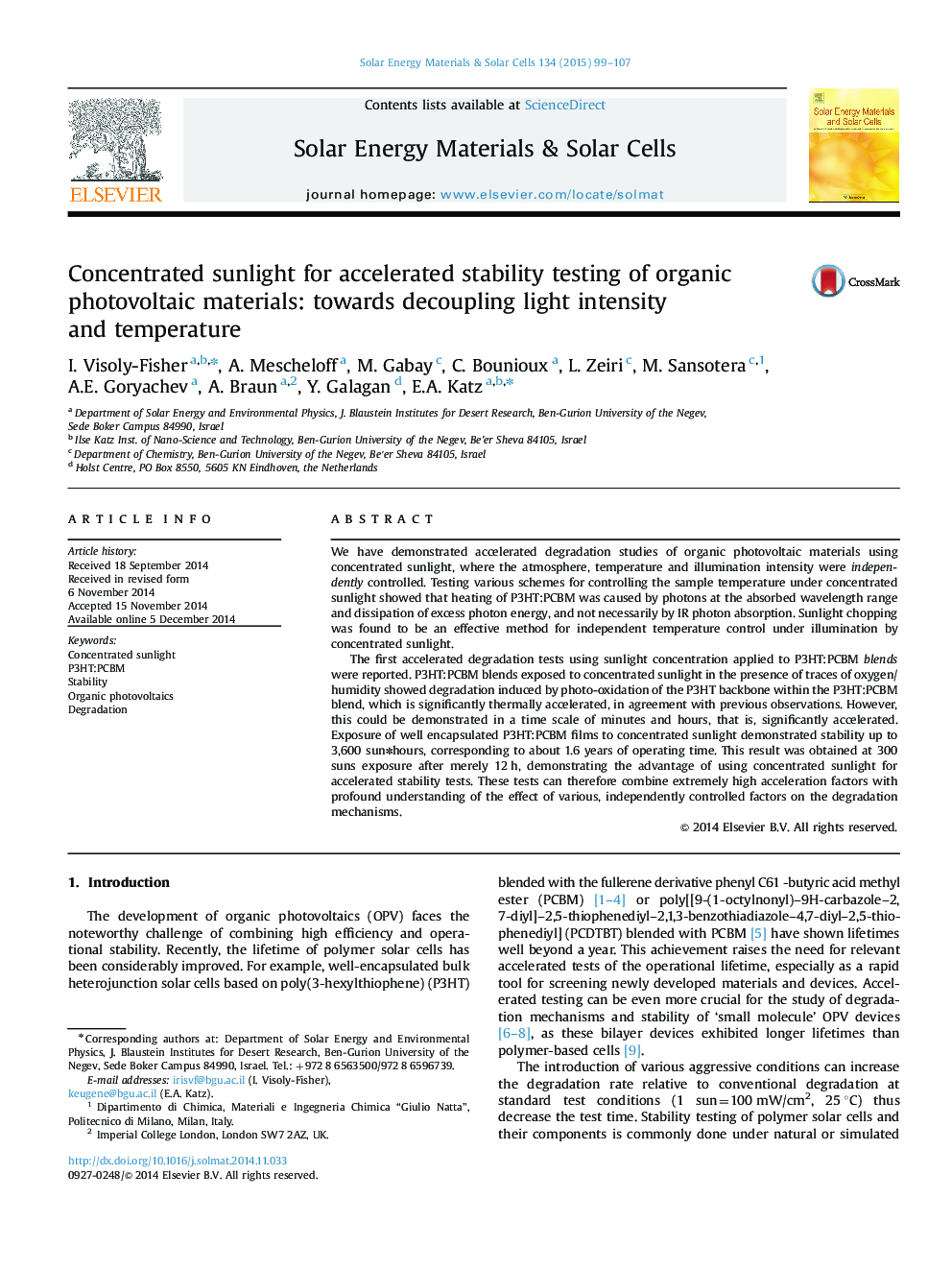| Article ID | Journal | Published Year | Pages | File Type |
|---|---|---|---|---|
| 77896 | Solar Energy Materials and Solar Cells | 2015 | 9 Pages |
•Concentrated sunlight was used for accelerated degradation tests of organic PV materials.•Independent control of atmosphere, temperature and illumination intensity.•Sunlight chopping is an effective method for independent temperature control.•Concentrated sunlight exposure of P3HT:PCBM implied high degradation acceleration factors.•Encapsulated P3HT:PCBM blends exposed to concentrated sunlight were stable up to 3,600 sun*hours.
We have demonstrated accelerated degradation studies of organic photovoltaic materials using concentrated sunlight, where the atmosphere, temperature and illumination intensity were independently controlled. Testing various schemes for controlling the sample temperature under concentrated sunlight showed that heating of P3HT:PCBM was caused by photons at the absorbed wavelength range and dissipation of excess photon energy, and not necessarily by IR photon absorption. Sunlight chopping was found to be an effective method for independent temperature control under illumination by concentrated sunlight.The first accelerated degradation tests using sunlight concentration applied to P3HT:PCBM blends were reported. P3HT:PCBM blends exposed to concentrated sunlight in the presence of traces of oxygen/ humidity showed degradation induced by photo-oxidation of the P3HT backbone within the P3HT:PCBM blend, which is significantly thermally accelerated, in agreement with previous observations. However, this could be demonstrated in a time scale of minutes and hours, that is, significantly accelerated. Exposure of well encapsulated P3HT:PCBM films to concentrated sunlight demonstrated stability up to 3,600 sun⁎hours, corresponding to about 1.6 years of operating time. This result was obtained at 300 suns exposure after merely 12 h, demonstrating the advantage of using concentrated sunlight for accelerated stability tests. These tests can therefore combine extremely high acceleration factors with profound understanding of the effect of various, independently controlled factors on the degradation mechanisms.
Graphical abstractFigure optionsDownload full-size imageDownload as PowerPoint slide
